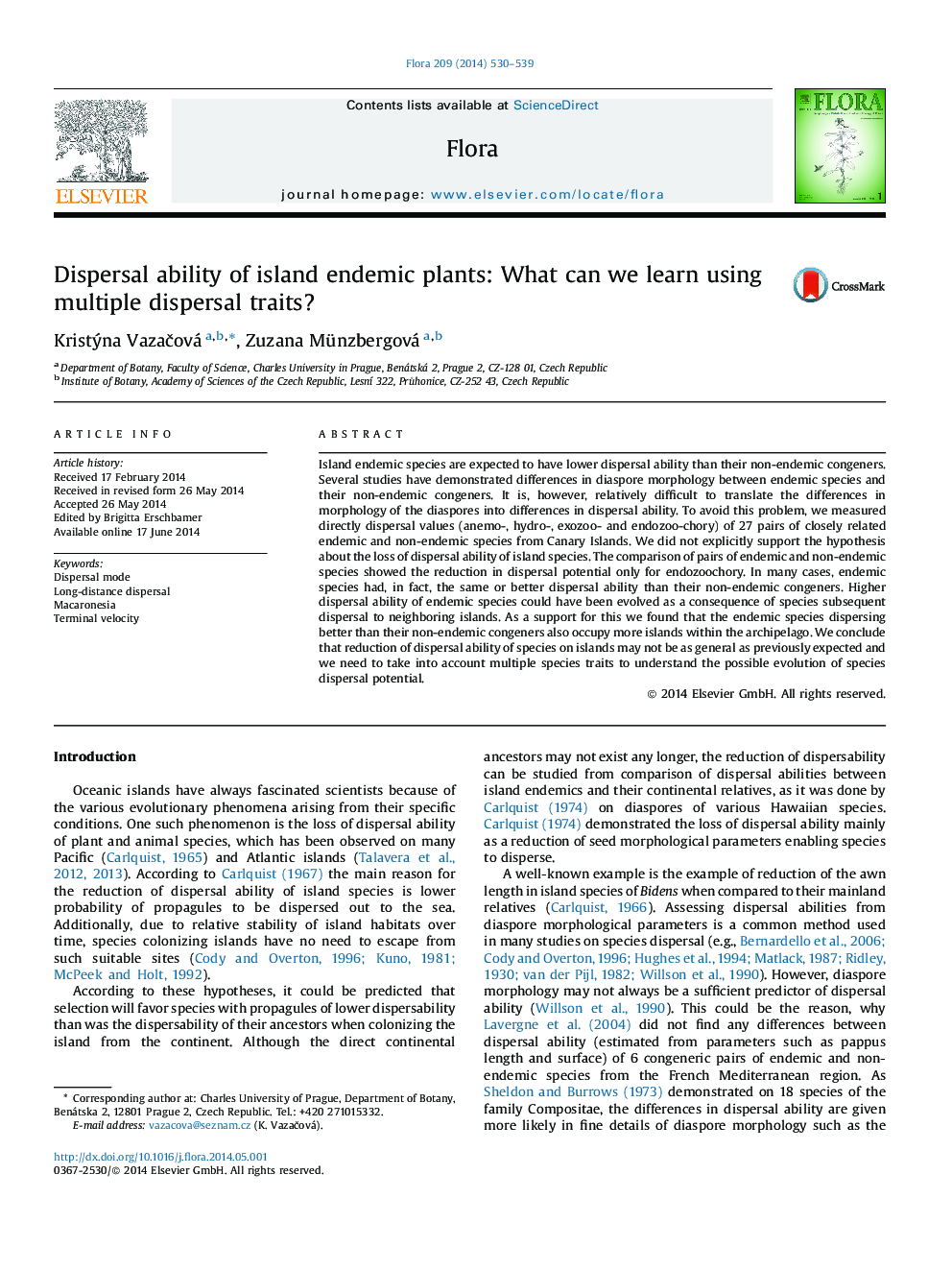| Article ID | Journal | Published Year | Pages | File Type |
|---|---|---|---|---|
| 2179512 | Flora - Morphology, Distribution, Functional Ecology of Plants | 2014 | 10 Pages |
•We measured dispersability of pairs of endemics and non-endemics from Canary Islands.•The loss of dispersal ability of island species was not explicitly shown.•Endemics tend to have the same or better dispersability than non-endemics.•The relationship within pairs reflected species distribution among islands.
Island endemic species are expected to have lower dispersal ability than their non-endemic congeners. Several studies have demonstrated differences in diaspore morphology between endemic species and their non-endemic congeners. It is, however, relatively difficult to translate the differences in morphology of the diaspores into differences in dispersal ability. To avoid this problem, we measured directly dispersal values (anemo-, hydro-, exozoo- and endozoo-chory) of 27 pairs of closely related endemic and non-endemic species from Canary Islands. We did not explicitly support the hypothesis about the loss of dispersal ability of island species. The comparison of pairs of endemic and non-endemic species showed the reduction in dispersal potential only for endozoochory. In many cases, endemic species had, in fact, the same or better dispersal ability than their non-endemic congeners. Higher dispersal ability of endemic species could have been evolved as a consequence of species subsequent dispersal to neighboring islands. As a support for this we found that the endemic species dispersing better than their non-endemic congeners also occupy more islands within the archipelago. We conclude that reduction of dispersal ability of species on islands may not be as general as previously expected and we need to take into account multiple species traits to understand the possible evolution of species dispersal potential.
